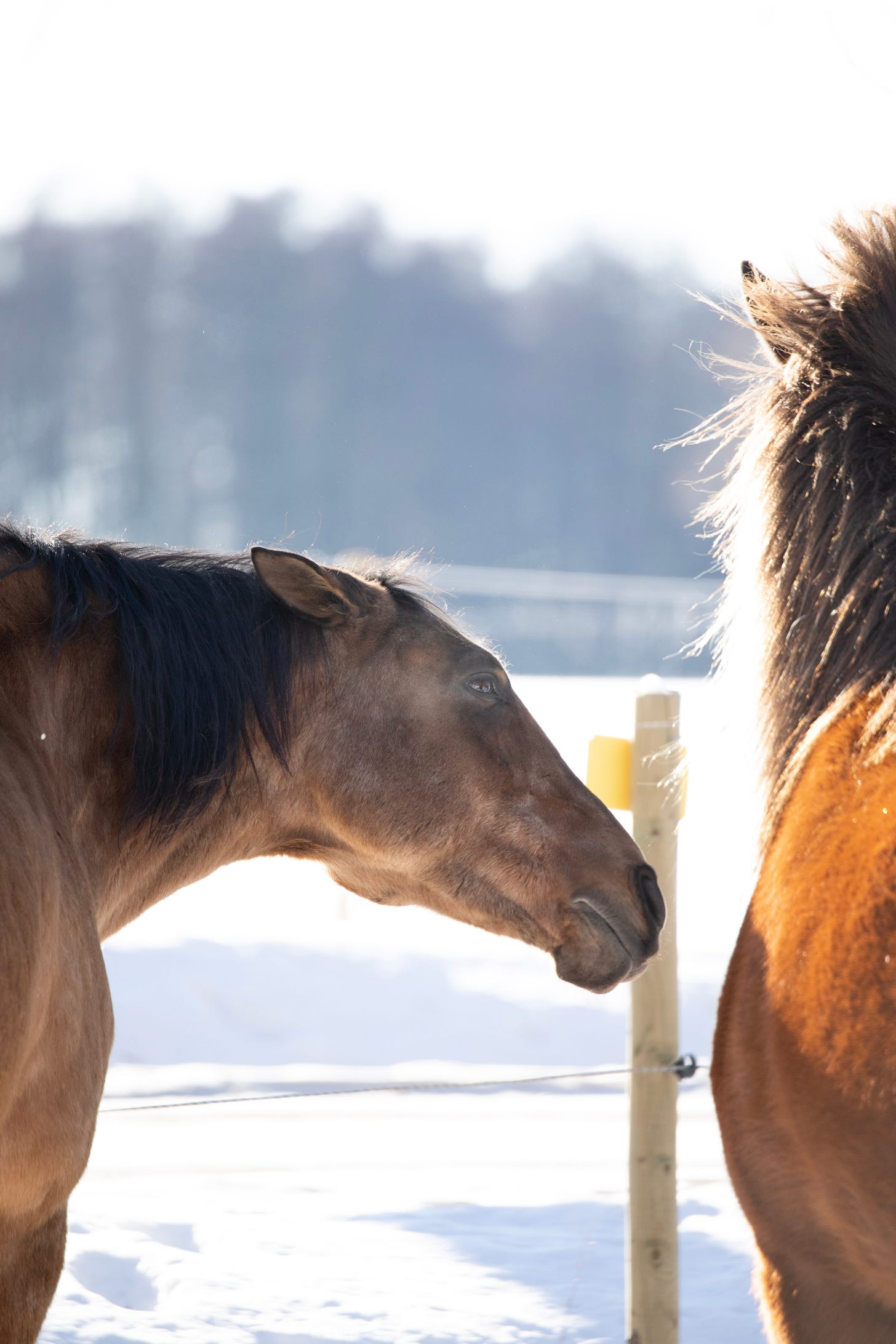In this four-part series I will go into detail about aggression in horses from a behavioural perspective. First up: what is the purpose of aggression and how can we learn to read the warning signals?
What is aggression?
First, let’s redefine aggression from a behavioural standpoint. We all know what people mean when they say a horse is aggressive, but it doesn’t really give us much information about what’s really going on.
“Aggression” is an umbrella term for many different behaviours that horses use to achieve one of three main goals: escaping from a dangerous situation, protecting an important resource, or creating distance to another individual. Aggression is not all-or-nothing but consists of a broad set of behaviours of varying intensity that serve as complex communication between individuals. Ultimately, the purpose of aggression is survival, and it is therefore a vital part of any species’ behavioural repertoire.
With that said, horses are not a particularly aggressive species. In natural settings and stable family groups the levels of aggression between horses are very low. There is an old misconception that horses fight to establish a “pecking order” and constantly challenge each other over their position in this hierarchy. This is not true. Studies have found no correlation between aggression, dominance, or leadership: the most aggressive horses are not necessarily the ones that have primary access to resources, and the ones that initiate movement in the group are not necessarily the most dominant ones.
Instead, horses maintain social cohesion through friendly interactions and avoidance responses. If a herd mate asks them to move away, they politely oblige rather than challenge to a fight.
The Equine Ladder of Aggression
How do horses politely ask each other to move away? As mentioned above, aggression isn’t all-or-nothing but rather a complex method of communication. Each species will have warning signals of steadily increasing intensity, and individuals of that species will use these exhaustively before launching into full-scale confrontations. The warning signals serve to defuse a situation and prevent an escalation of violence.
Here are some of the warning signals (also called varyingly appeasement signals, calming signals, distance increasing signals, and threat signals) horses use to let their herd mates know that they aren’t comfortable with a situation:
Turning head or neck
Yawning repeatedly
Sniffing the ground
“Worry wrinkle” around the eye
Blinking more than usual
Turning the flank
Ears back
Wrinkled nostrils and lips
Elevated head posture
Stomping feet
Swishing tail
Baring teeth
Extending the neck
Biting the air
Lunging forward
Kicking the air with one hind leg
Lifting the hind end but not kicking out
The signals increase in intensity from almost indiscernible facial expressions to distinct bite and kick threats. In a social group, the normal response to any of the early warning signals is to move away. Failure to do so will result in an escalation to more obvious signals, all the way up to the outright threats and even full-blown aggression.
This steadily increasing intensity of communication can be seen in many species. In dogs, it has been conceptualised as a Canine Ladder of Aggression by Dr. Kendal Shepherd. Inspired by this I created an Equine Ladder of Aggression. It is based on a variety of established ethograms, behavioural studies and personal observations, as well as on Rachael Draaisma’s work on calming signals in horses. It is meant to serve as a tool in our daily interactions with our horses, to identify and interpret the early warning signals and avoid a dangerous escalation. Learning the Equine Ladder of Aggression is an important key to being safe around horses.
When using the Equine Ladder of Aggression, please remember that it is an imperfect model that attempts to distill the complexity and nuance of equine communication into a graphic. In reality, not all horses will display all of these behaviours, and some horses may escalate faster than others.
This was the first post in my four-part series on aggression in horses. The next three posts in this series will be:
Why some horses are more prone to behaving aggressively than others.
Why punishing a horse for displaying aggression is a really bad idea.
What you can do if your horse becomes aggressive.






